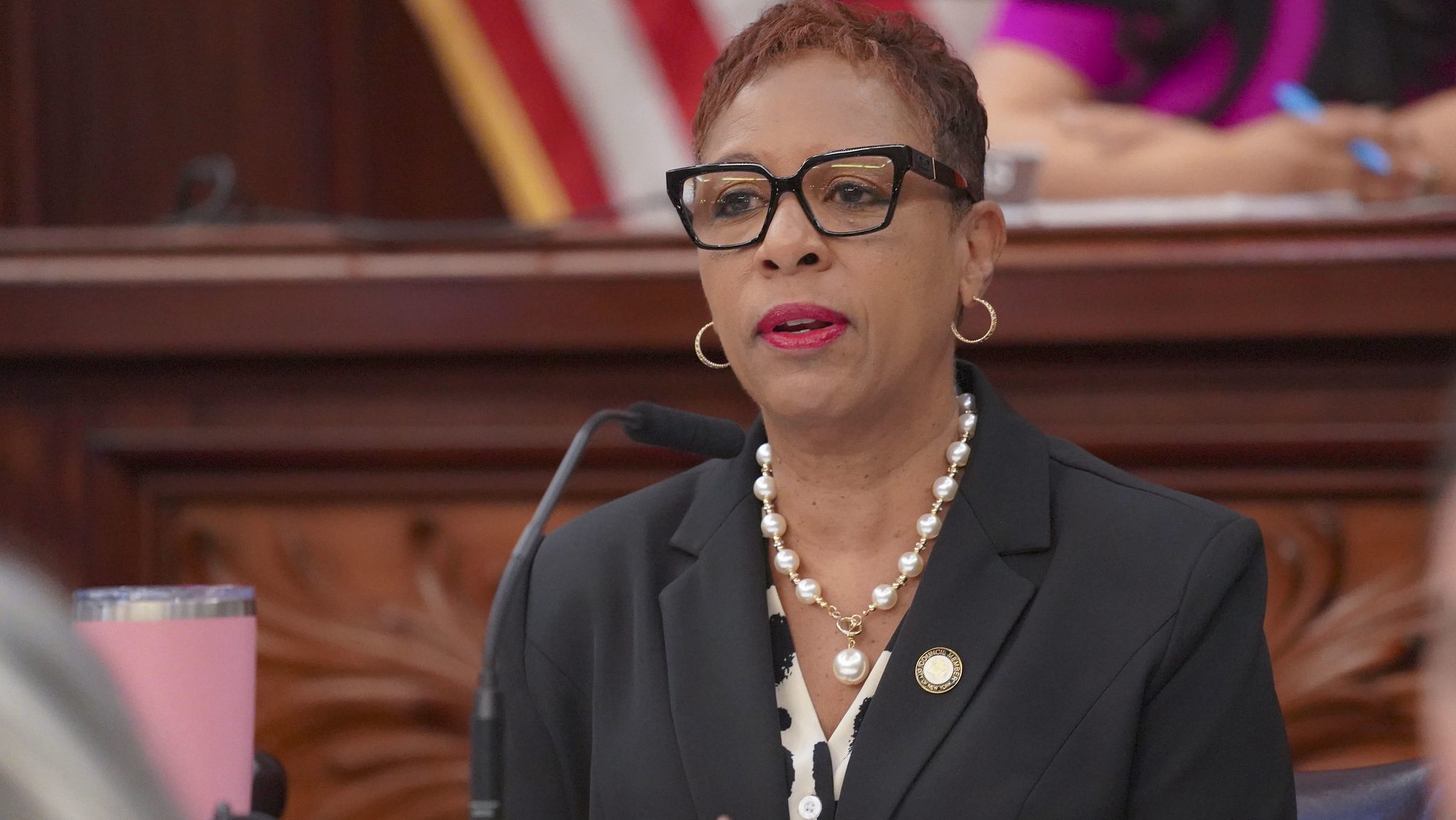The worst street in my neighborhood is a constant reminder of the dysfunction of our city. The street in question, West 177th Street between Broadway and Fort Washington Avenue, is dangerous and uncomfortable for cyclists, pedestrians, parkers, and drivers.
Don’t just take my word for it. Here's a picture of what it more or less looks like every day:

If you look from left to right in the photo above, you see each element of the dysfunction: Single-day alternate side parking means there will never be a spot available at the curb lane on the left. There's always a long and persistently sticky row of double-parked cars. There's a painted bike lane, yes, but it's basically the traffic line for all vehicles. And the northern sidewalk (on the right) narrows to about five feet at the corner … near the subway station entrance, where more, not less, space is needed.
This block is a standard New York City street: 60 feet from curb to curb. But it’s different in one key way: the uses demanded of this block are extraordinary.
For motor vehicles, the street is a direct link to the Henry Hudson Parkway, two blocks to the George Washington Bridge, and close to Columbia Presbyterian Hospital.
For cyclists, it is a direct link to the south walkway over the George Washington Bridge or a few blocks to a bridge at 181st Street to the Hudson River Greenway bike path.
Pedestrians are heading to the subway entrance at Fort Washington Avenue — both stairs and an ADA elevator, on the narrower side of the sidewalk — or the M4 bus, or the Port Authority bus station, or anywhere in one of the densest neighborhoods in New York City.
For someone looking to park, forget about it. The parking is alternate-side, once a week. No one ever moves, there is never a spot. One wonders why my neighbors even have cars if they are never going to use them.
Before you dismiss the double-parkers, remember that if there is rampant double-parking, there’s usually a reason for it: The double parkers include trucks, due to most of Broadway being meters not commercial parking; for-hire vehicles poised at a great connection point; patrons of the stores, restaurants and a new cannabis shop; jitney buses bound for the Port Authority to load and unload.
Other drivers double-park there because everyone else does. With impunity.
But the design of the street takes none of these facts into account, and therefore fails all users.
The fix is so simple: Pull out the DOT toolbox. Add a protected bike lane, a buffer, parking reassigned as "Trucks Only," short-term meters, a loading zone, and make the rest alternate-side parking. Move the jitneys to Fort Washington Avenue and probably punt on the sidewalk fix, it’s costlier.
But that’s not what this article is about. This article is about how hard it is to simply convey the above information to the relevant authorities.
And I know this because I have tried. And tried. And I have failed.
A DOT staffer once told me that there is no internal system at the agency to handle complex complaints such as this. Instead, I was advised to pick a single issue and file a report.
So I did: I called 311. Twice. Both cases were closed quickly, though once, cops wrote a summons. But this isn’t an enforcement issue. It’s a design issue. Logging scores of 311 complaints is just going to shove my complaints to the bottom of the pile and never get read by anyone at DOT anyway.
I went to the city DOT website. It's a great site with extensive lists of possible issues you can report, such as pavement problems, missing manhole (sic) covers, or broken infrastructure. But there's no way to report, "My street doesn't work for any user and needs a complex redesign."
A complex design problem — whose solution will ultimately require studies of a bike lane, parking regulations, and vehicular and pedestrian movement — needs a simple mechanism so any citizen can report a dysfunctional street. And then DOT would need a system for quickly assessing those claims. This block of West 177th Street has been dangerous and congested for years. There are no more excuses, because to accept this block is to say we don’t care how fucked up our city is; that it is still 1977, that the city only functions in spite of itself.
Fortunately, the DOT website does allow residents to digitally transmit a letter to Commissioner Ydanis Rodriguez! I wrote out a whole story about W. 177th Street and hit "send." Of course, it didn’t go through. Not the first time nor the 20th time.
So here's my letter to the commissioner. I hope someone at DOT will read it — and take the next step.






